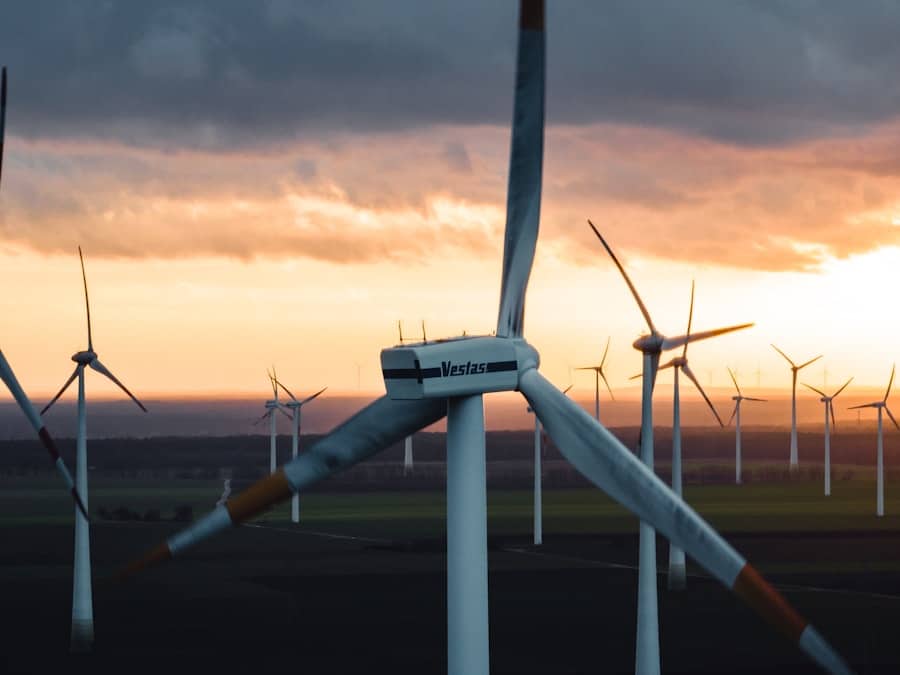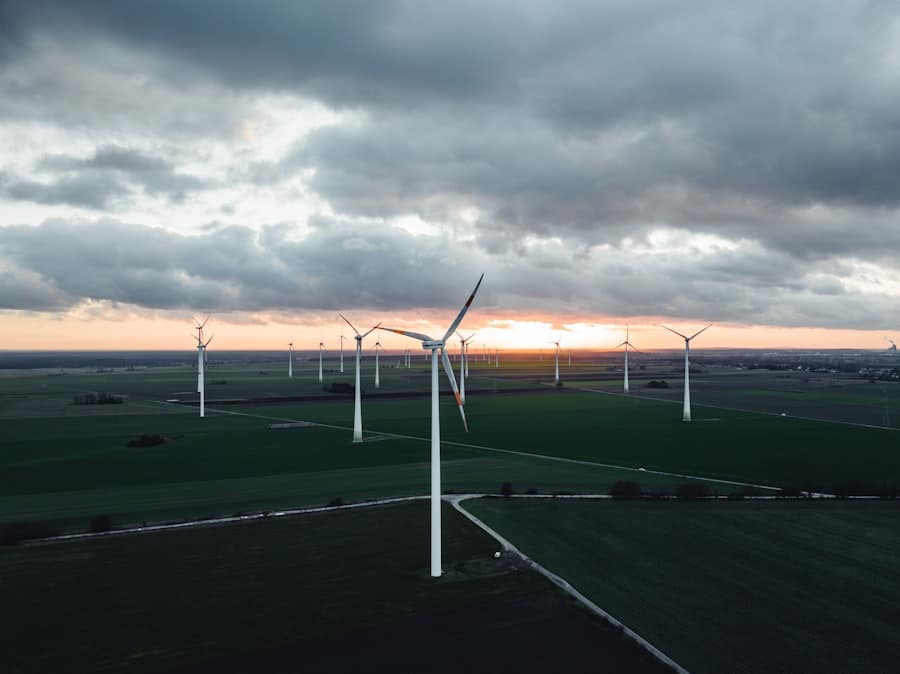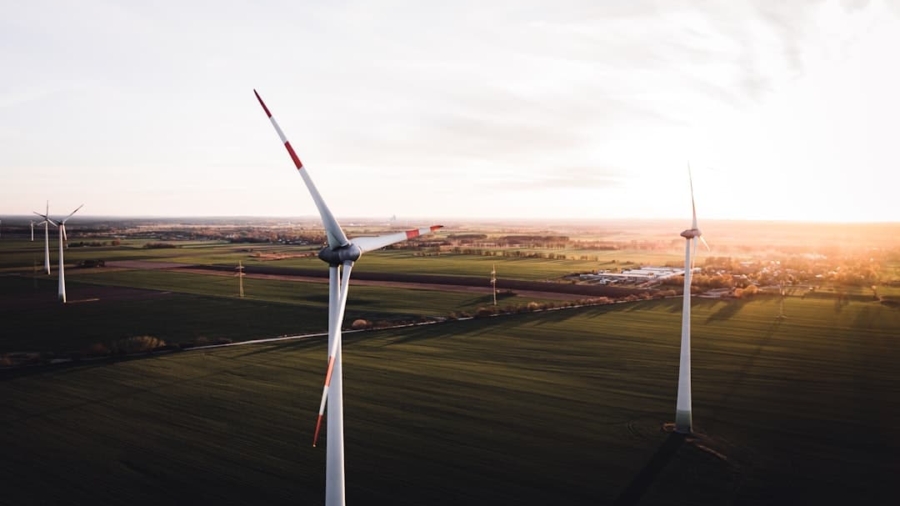Drone cinematography has emerged as a revolutionary force in the world of filmmaking, transforming the way stories are told and visuals are captured. The advent of unmanned aerial vehicles (UAVs) equipped with high-definition cameras has opened up new horizons for filmmakers, allowing them to achieve breathtaking aerial shots that were once the domain of expensive helicopter rentals or complex rigging setups. This technology has democratized access to high-quality aerial footage, enabling independent filmmakers and content creators to produce cinematic visuals that rival those of major studios.
As drones become more sophisticated and user-friendly, their integration into the filmmaking process continues to evolve, offering creative possibilities that were previously unimaginable. The allure of drone cinematography lies not only in its ability to capture stunning visuals but also in its versatility. Drones can maneuver through tight spaces, fly at varying altitudes, and provide unique perspectives that enhance storytelling.
From sweeping landscapes to intimate close-ups, drones can adapt to a wide range of filming conditions, making them an invaluable tool for directors and cinematographers. As the technology advances, filmmakers are increasingly exploring innovative ways to incorporate drone footage into their narratives, pushing the boundaries of traditional cinematography and redefining visual storytelling in the process.
Key Takeaways
- Drone cinematography has revolutionized the way filmmakers capture aerial shots, providing a new perspective and creative possibilities.
- Drones have significantly impacted filmmaking by making it more accessible and cost-effective to capture stunning aerial footage.
- The benefits of using drones in entertainment include capturing dynamic shots, saving time and money, and reducing safety risks, but challenges include regulations, technical limitations, and privacy concerns.
- The evolution of drone technology has led to advancements in camera stabilization, flight control, and obstacle avoidance, enhancing the quality and safety of aerial cinematography.
- The rise of drone cinematography in television and streaming content has allowed for more immersive storytelling and visually captivating scenes, setting new standards for production quality.
The Impact of Drones on Filmmaking
The impact of drones on filmmaking is profound and multifaceted. One of the most significant changes has been the reduction in costs associated with aerial cinematography. In the past, capturing aerial shots often required hiring helicopters or fixed-wing aircraft, along with specialized crews and equipment.
This made aerial footage a luxury that was typically reserved for big-budget productions. However, with the introduction of drones, filmmakers can now achieve similar results at a fraction of the cost. This shift has empowered independent filmmakers and smaller production companies to incorporate high-quality aerial shots into their projects without breaking the bank.
Moreover, drones have expanded the creative toolkit available to filmmakers. The ability to capture dynamic shots from various angles and heights allows for greater experimentation with composition and movement. For instance, a drone can seamlessly transition from a high-altitude overview of a landscape to a low-flying shot that weaves through trees or buildings, creating a sense of immersion that enhances the viewer’s experience.
This flexibility has led to innovative storytelling techniques, where aerial footage is not merely an embellishment but an integral part of the narrative structure. Filmmakers are now able to convey emotions and themes through aerial perspectives, enriching the overall cinematic experience.
The Benefits and Challenges of Using Drones in Entertainment

The benefits of using drones in entertainment are numerous and varied. One of the most notable advantages is the ability to capture stunning visuals that were previously difficult or impossible to achieve. Drones can fly at low altitudes, navigate through challenging terrains, and provide unique angles that traditional cameras cannot replicate.
This capability allows filmmakers to create visually striking sequences that captivate audiences and elevate the overall production value. Additionally, drones are often more agile than traditional filming methods, enabling quick adjustments and spontaneous shots that can enhance the storytelling process. However, the use of drones in entertainment also presents several challenges that filmmakers must navigate.
One significant concern is safety; operating drones in crowded or complex environments can pose risks to both crew members and bystanders. Filmmakers must adhere to strict safety protocols and regulations to ensure that drone operations do not endanger anyone involved in the production or the public at large. Furthermore, weather conditions can significantly impact drone performance; strong winds or rain can hinder flight capabilities and affect the quality of footage captured.
Filmmakers must be prepared to adapt their shooting schedules and techniques based on environmental factors, which can complicate production timelines.
The Evolution of Drone Technology in Cinematography
The evolution of drone technology has been rapid and transformative, particularly in the realm of cinematography. Early drones were often rudimentary in design, with limited flight capabilities and basic camera systems. However, advancements in technology have led to the development of sophisticated UAVs equipped with high-resolution cameras, stabilization systems, and advanced flight controls.
Modern drones can now capture 4K and even 8K video, providing filmmakers with exceptional image quality that meets industry standards. In addition to improvements in camera technology, advancements in software have also played a crucial role in enhancing drone cinematography. Modern drones come equipped with intelligent flight modes that allow for automated tracking, waypoint navigation, and obstacle avoidance.
These features enable filmmakers to execute complex shots with precision and ease, reducing the need for extensive manual piloting skills. Furthermore, advancements in battery life and flight time have extended the operational capabilities of drones, allowing for longer shooting sessions without interruptions for recharging. As technology continues to evolve, filmmakers can expect even more innovative features that will further enhance the creative possibilities of drone cinematography.
The Rise of Drone Cinematography in Television and Streaming Content
The rise of drone cinematography has been particularly pronounced in television and streaming content, where high production values are essential for attracting viewers. Streaming platforms such as Netflix, Amazon Prime Video, and Hulu have embraced drone technology to elevate their original programming, utilizing stunning aerial shots to create visually compelling narratives. From nature documentaries showcasing breathtaking landscapes to action-packed series featuring dynamic chase sequences, drones have become a staple in modern television production.
The use of drones allowed filmmakers to follow animals in their natural habitats without disturbing them, resulting in intimate and breathtaking visuals that captivated audiences worldwide. Similarly, shows like “Game of Thrones” employed drone cinematography to create epic battle scenes and sweeping vistas of fictional landscapes, enhancing the overall cinematic experience for viewers.
As television continues to evolve in response to audience demands for high-quality content, drone cinematography will likely play an increasingly prominent role in shaping the future of visual storytelling.
The Legal and Ethical Considerations of Using Drones in Filmmaking

As drone usage in filmmaking becomes more prevalent, legal and ethical considerations have emerged as critical factors for filmmakers to address. Regulatory frameworks governing drone operations vary significantly across different countries and regions, necessitating filmmakers to familiarize themselves with local laws before incorporating drones into their projects. In many jurisdictions, obtaining permits for commercial drone use is mandatory, particularly when filming in populated areas or near sensitive locations such as airports or national parks.
Ethical considerations also come into play when using drones for filmmaking. Issues related to privacy are paramount; capturing footage of individuals without their consent can lead to legal repercussions and ethical dilemmas. Filmmakers must navigate these concerns carefully, ensuring that they respect individuals’ rights while still capturing compelling visuals.
Filmmakers are increasingly called upon to consider these ethical implications as they strive to balance creative expression with responsible filmmaking practices.
Examples of Successful Drone Cinematography in Entertainment
Numerous examples highlight the successful integration of drone cinematography into entertainment projects across various genres. One standout instance is the film “The Secret Life of Walter Mitty,” which features breathtaking drone shots capturing stunning landscapes from around the world. The film’s use of drones allowed for sweeping aerial views that enhanced its adventurous spirit while immersing viewers in its visually rich narrative.
Another notable example is “The Avengers: Age of Ultron,” which utilized drone technology for its action sequences. The film’s directors employed drones to capture dynamic aerial shots during intense battle scenes, providing audiences with a sense of scale and excitement that traditional filming methods could not achieve. These examples illustrate how drone cinematography can elevate storytelling by providing unique perspectives that enhance both visual appeal and narrative depth.
In addition to feature films, documentaries have also benefited from drone technology. The documentary “Chasing Ice,” which chronicles climate change through stunning time-lapse photography, utilized drones to capture expansive glacial landscapes from above. This innovative approach not only showcased the beauty of these natural wonders but also highlighted the urgency of environmental issues facing our planet.
The Future of Drone Cinematography in the Entertainment Industry
Looking ahead, the future of drone cinematography in the entertainment industry appears promising as technology continues to advance at a rapid pace. Innovations such as artificial intelligence (AI) integration are likely to further enhance drone capabilities, allowing for smarter flight patterns and automated shot composition based on real-time analysis of scenes. This could enable filmmakers to focus more on creative aspects while relying on drones to execute complex shots with precision.
Moreover, as virtual reality (VR) and augmented reality (AR) technologies gain traction within the entertainment landscape, drones may play a pivotal role in creating immersive experiences for audiences. By capturing 360-degree footage from unique aerial perspectives, filmmakers could transport viewers into dynamic environments that blur the lines between reality and fiction. As regulatory frameworks evolve alongside technological advancements, filmmakers will likely find new opportunities for creative expression through drone cinematography while navigating legal and ethical considerations responsibly.
The continued exploration of this medium promises exciting developments that will shape the future of visual storytelling across film, television, and beyond.
In recent years, the entertainment industry has witnessed a significant transformation with the advent of drone cinematography, offering filmmakers unprecedented creative possibilities and dynamic aerial perspectives. This technological advancement parallels innovations in other tech sectors, such as the development of versatile and powerful computing devices. For instance, the Samsung Notebook 9 Pro is a noteworthy example of how technology is evolving to meet the demands of modern users, providing robust features that cater to both creative professionals and everyday consumers. To explore more about the capabilities of this device, you can read the related article on Exploring the Features of the Samsung Notebook 9 Pro. This article delves into the specifications and functionalities that make the Samsung Notebook 9 Pro a valuable tool for those in the creative industry, much like drones have become in cinematography.
FAQs
What is drone cinematography?
Drone cinematography is the use of unmanned aerial vehicles (UAVs), commonly known as drones, to capture aerial footage for films, television shows, commercials, and other visual media projects.
How has drone cinematography impacted the entertainment industry?
Drone cinematography has revolutionized the way aerial shots are captured in the entertainment industry. It has allowed filmmakers to achieve stunning and dynamic aerial shots at a fraction of the cost of traditional methods such as helicopters or cranes.
What are the benefits of using drones for cinematography?
Using drones for cinematography offers several benefits, including the ability to capture unique and creative aerial perspectives, increased flexibility and maneuverability, cost-effectiveness, and the ability to access locations that may be difficult or dangerous for traditional filming equipment.
What are some popular films or TV shows that have utilized drone cinematography?
Several popular films and TV shows have incorporated drone cinematography, including “Game of Thrones,” “The Wolf of Wall Street,” “Jurassic World,” and “The Revenant.”
What are the regulations and restrictions for using drones in cinematography?
The use of drones for cinematography is subject to regulations and restrictions set by aviation authorities in different countries. These regulations typically include obtaining proper permits, adhering to flight restrictions, and ensuring the safety of crew and the public.
What are some challenges associated with drone cinematography?
Challenges associated with drone cinematography include weather conditions, technical limitations of drones, battery life, and the need for skilled and experienced drone operators to ensure safe and high-quality footage.

